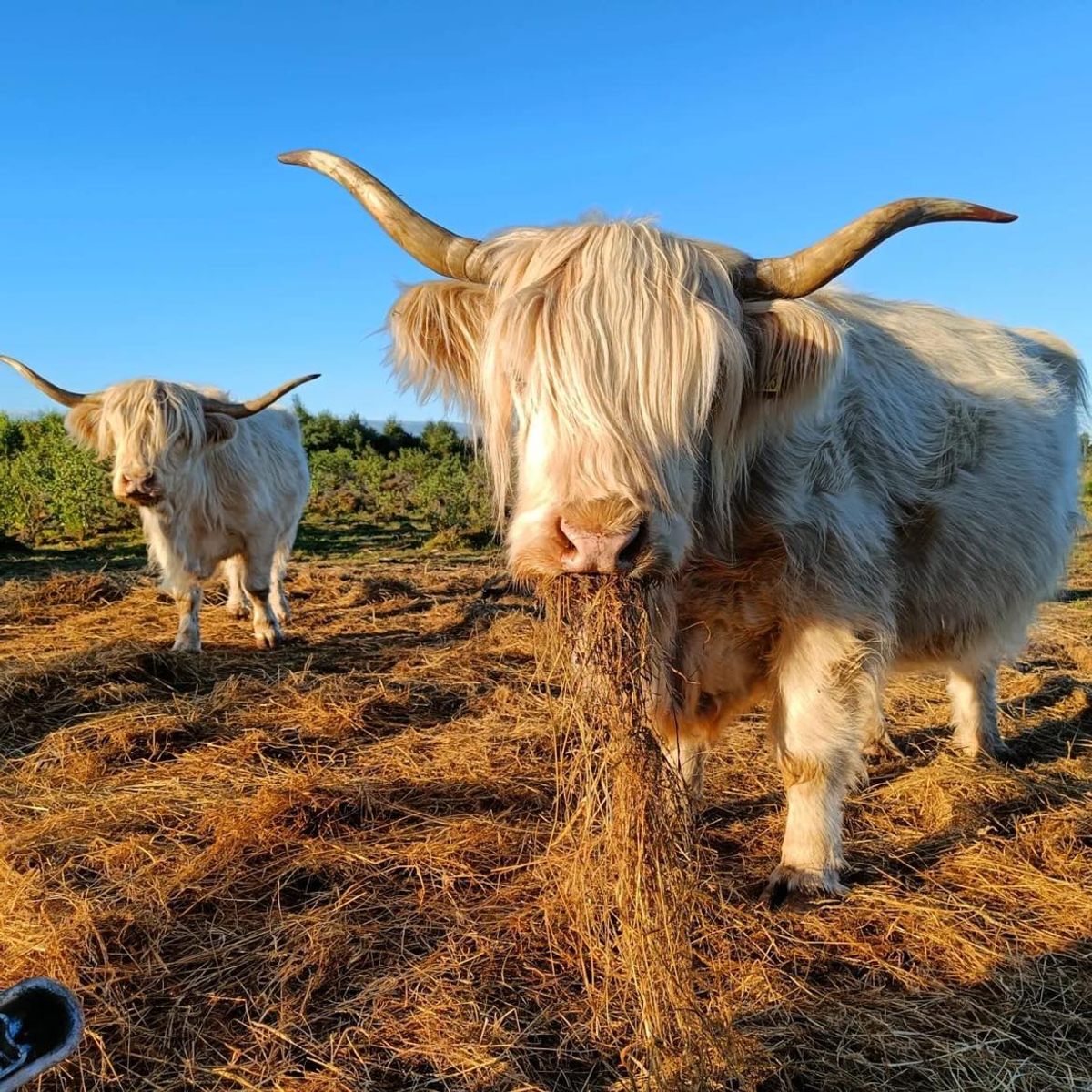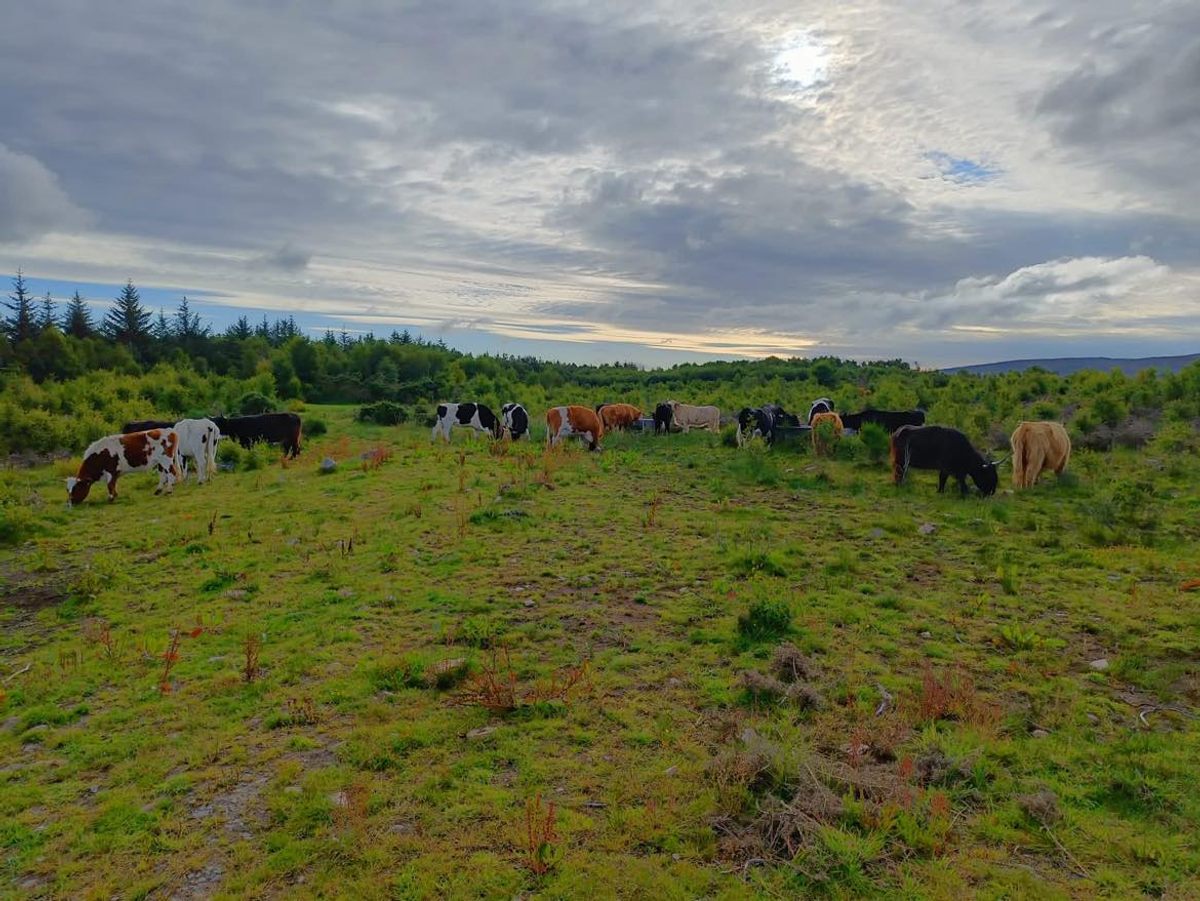
How Highland Cows Are Restoring Culloden Battlefield’s Historic Bog
Heritage breed cattle make quick work of the battlefield’s invasive plant species.
In April 1746, British government forces killed 1,250 Jacobite soldiers in a waterlogged field near Inverness, Scotland—ending the last serious attempt to reinstate a Catholic monarch in England. Centuries later, the hallowed moor has become a national park in Scotland: Culloden Battlefield. But lately, informational plaques and war memorials aren’t the only things capturing visitors’ attention. Since 2015, 19 adorable, shaggy Highland and Shetland cows have become critical residents of the historic battleground.
As the park’s conservation manager, it’s Ellen Fogel Walker’s job to tell visitors about the importance of the Battle of Culloden, from being the last pitched battle on British soil to how the decisive defeat brought an end to Jacobitism. But for decades, Walker says, telling that story has been difficult as the bog—the critical landscape feature that foiled the Jacobites—was, well, not boggy. Three years ago, however, the landscape began to revert to its original appearance thanks to those darling Highland and Shetland coos, as the Scots call them.
250 years ago, shaggy Highland cows would’ve dotted the then-unknown fields of Culloden. That all changed on the morning of April 16, 1746, when Bonnie Prince Charles’s forces met the British government troops led by the Duke of Cumberland, the Hanoverian King George II’s son. The Jacobites acted first, launching their highly effective Highland charge, running and screaming clan war cries at the Duke’s troops. But as they sprinted forward, the clammy muck of Culloden Moor thwarted them. Horses sunk to their bellies, and men floundered. In the space of 10 minutes, over 700 Jacobites were killed or wounded. The battle was a decisive victory securing the Protestant Hanoverian crown.
Almost immediately, Culloden Battlefield became a memorial. Today, visitors travel from across the world to visit the site and pay their respects. However, since the late 19th century, the environment hasn’t reflected what the Jacobites faced.
“Forests planted in the 1880s changed the irrigation of this area, and it became a lot drier,” Walker says. During World War I and II, Britain planted many non-native trees for timber, which soon caused the bog to dry up making historical storytelling difficult. “Culloden is best understood looking at the vast, wet, bleakness of the battlefield,” says Valerie Whistler, a park ranger and tour guide at Culloden.
Enter the Highland and Shetland cows.

Looking at Culloden’s pack of 19 furry heritage breed cattle, you might not think it, but the cows make ideal landscapers for sensitive terrain.
Culloden is as much a historic battleground as a cemetery. “Over 1,000 people are buried here,” Walker says, and that makes the work of restoring the sacred ground extremely delicate. Deploy heavy machinery and you could upset the final resting place of hundreds of soldiers. Highland and Shetland cattle, on the other hand, are small and agile and can consume 155 pounds of plant matter a day. “They eat everything from the fast-growing birch to the prickly gorse,” Walker says, which has been key to the bog’s restoration.
In the 1980s, the National Trust for Scotland began removing Culloden’s invasive forest, but there was a hitch. “As you remove trees, unless you use pesticides and herbicides, which we don’t, the trees will come back,” Walker says.
“If we don’t keep that in check,” Whistler adds, “saplings grow into trees, which ultimately suck the water out of the bog.” But saplings, heather, and scrub make a delicious supper for heritage breed cows.
“Each cow has its own personality. They’re incredibly smart, and we all have our favorites,” Whistler says. “I’m partial to a lovely blond Highland cow named Flora.” The butter-hued bovine is a bit aloof and likes to stay on the periphery, but Whistler says she’s a dignified girl.
Then there’s Twix, a visitor favorite. He’s easy to spot due to his lopsided horns, one pointing up, the other down. “He is a super lovely and very curious boy. He wants to know everything you are doing and is always watching, his eyes following you to see what you are up to. Cows are not only inquisitive; they are very smart,” Whistler says.
Strategically positioning the herd in different sections of the park has allowed the desolate upland moor to resuscitate. The landscape’s evolution was so remarkable that the late professor Christopher Duffy, the foremost expert on Culloden, said, “It was amazing—just a thrilling visit,” he remarked during his 2021 visit to the staff upon, “seeing the original bog landscape coming back to life.”
If anything, the cow’s conservation work has been almost too good. Some guests have complained about the site being too muddy. “We are happy that visitors are noticing the conditions changing at Culloden Battlefield,” Walker says. “While we are keen to make sure that paths are accessible, we ask visitors to remember that we are on a moor and conditions can be wet.”
Thanks to the Highland and Shetland cows, the same breeds that would have been grazing the land that fateful day 278 years ago, visitors can now experience the ground as the soldiers did.
“You can feel the tragedy of the place,” Whistler says. “If the trees were allowed to grow into a forest, it would take away the honest narrative of what is so important for us to remember—that what happened here was horrific.”



























Follow us on Twitter to get the latest on the world's hidden wonders.
Like us on Facebook to get the latest on the world's hidden wonders.
Follow us on Twitter Like us on Facebook